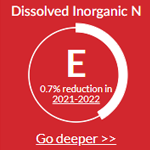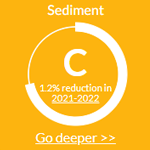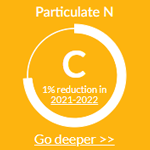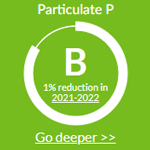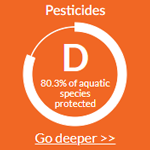Reef Water Quality Report Card 2021-2022
Improving Water Quality for the Reef
While climate change remains the greatest threat to the Reef, improving the quality of water flowing from land to sea is essential to alleviating additional pressures and supporting the Reef's health and resilience.
The annual Reef Water Quality Report Card measures progress towards the Reef 2050 Water Quality Improvement Plan targets across the six Reef regions: Cape York, Wet Tropics, Burdekin, Mackay Whitsunday, Fitzroy, and Burnett Mary, as well as the condition of wetlands and inshore marine environments.
Drawing from multiple sources of evidence, including industry and extension programs, the Report Card uses data primarily from the Paddock to Reef Integrated Monitoring, Modelling and Reporting Program (Paddock to Reef program).
Although the 2020 report card did not include land management practice adoption results due to an ongoing independent review, the overall progress is promising.
The Mackay Whitsunday Region
The Mackay Whitsunday region is the smallest in the Great Barrier Reef (GBR) catchment area, encompassing 900,475 hectares. It consists of four major catchments: Proserpine, O'Connell, Pioneer, and Plane.
The region supports diverse ecosystems, including soft coral communities and the nationally recognised Goorganga Wetlands. Coastal and marine habitats feature wetlands, fringing and offshore reefs, intertidal and sub-tidal seagrass beds, deep-water seagrass, and mangroves. The Whitsunday Islands are situated off the region's coast.
Main Land Uses:
- Grazing: 34%
- Conservation and Natural Environments: 29%
- Sugarcane Farming: 17%
- Forestry: 8%
Efforts are ongoing to enhance water quality through practical solutions developed and delivered in partnership with land managers, industry and community groups, researchers, governments, and Traditional Owners.
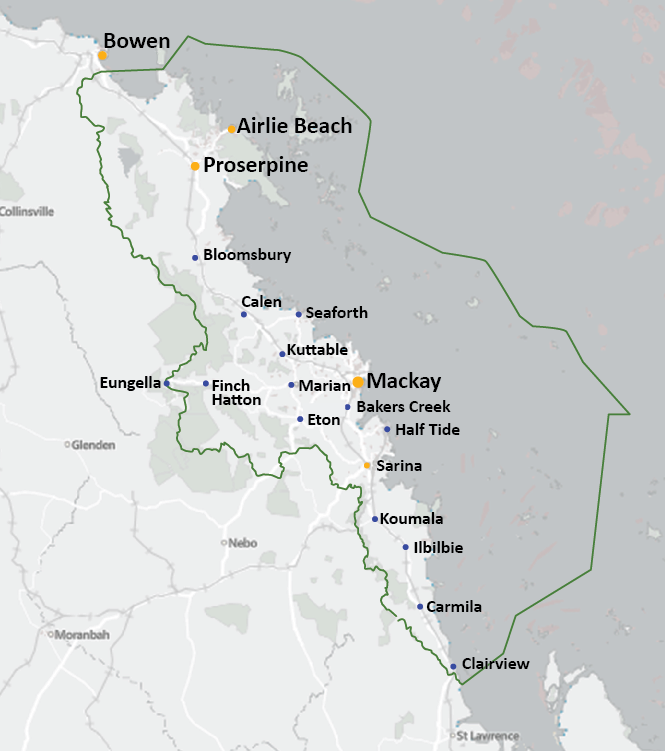
Reef Catchments' Role
Reef Catchments is the regional Natural Resource Management (NRM) organisation for the Mackay Whitsunday Isaac region. With offices in Mackay and Proserpine, the organisation focuses on working with the region’s agricultural industries, stakeholders, community and Traditional Owners to prioritise improvement of land management practices, lower pollutant loads and remove associated threats to the Reef.
Projects are carried out through four project groups:
More information on projects can be found in the Annual Report.
Reef Catchments’ vision for Resilient Ecosystems and an Engaged Community is supported through the Strategic Plan and the NRM Plan 2014-2024.
Mackay Whitsunday Region 2021 and 2022 Report Summary
Over the reporting period, Reef Catchments has continued to implement high priority projects targeted toward progressing Reef 2050 Water Quality targets. These have included:
- Improved farm and grazing management practices
- Streambank erosion control
- Farm pesticide management practices
This current Water Quality Report Card covers the two year period 2021 and 2022. While the overall regional report results show continued progress toward Reef 2050 Water Quality targets, it is clear that an intensified focus and expanded initiatives are needed to improve future report outcomes.
Reduction of Dissolved Inorganic Nitrogen (DIN) remains a high priority for the Mackay Whitsunday region. Elevated levels of DIN
Summary of Report Details
DIN (Dissolved Inorganic Nitrogen)
Target Reduction - 70%
2021-2022 reduction progress - +0.7%
Reduction to date - 29.1%
Grade: E (very poor)
The dissolved inorganic nitrogen load leaving catchments showed a cumulative reduction of 29.1% to June 2022 and a modelled reduction of 0.7% (approximately 7 tonnes) from July 2020 to June 2022.
The greatest modelled reduction for the Mackay Whitsunday region was 1.4% (approximately 4 tonnes) in the Plane Creek catchment. This result was achieved through adoption of best management practices in sugarcane nutrient and mill mud handling that reduced the nitrogen surplus and improved mill mud application.
Sediment
Target Reduction - 20%
2021-2022 reduction progress - +1.2%
Reduction to date - 14.3%
Grade: C (moderate)
The fine sediment load leaving catchments showed a cumulative reduction of 14.3% to June 2022 with a modelled reduction of 1.2% (approximately 5 kilotonnes) from July 2020 to June 2022.
These results were achieved through numerous streambank rehabilitation projects. The greatest modelled reduction was 2.6% (approximately 5 kilotonnes) in the O'Connell catchment
Particulate Nitrogen
Target Reduction - 20%
2021-2022 reduction progress - +1%
Reduction to date - 14.8%
Grade: C (moderate)
The particulate nitrogen load leaving catchments showed a cumulative reduction of 14.8% to June 2022 and a modelled reduction of 1.0% (approximately 16 tonnes) from July 2020 to June 2022.
These results were achieved through streambank rehabilitation projects in the O'Connell catchment. The greatest modelled reduction was 2.0% (approximately 14 tonnes) in the O'Connell catchment.
Particulate Phosphorus
Target Reduction - 20%
2021-2022 reduction progress - +1%
Reduction to date - 16.8%
Grade: B (good)
The particulate phosphorus load leaving catchments showed a cumulative reduction of 16.8% to June 2022 and a modelled reduction of 1.0% (approximately 5 tonnes) from July 2020 to June 2022.
These results were achieved through streambank rehabilitation projects in the O'Connell catchment. The greatest modelled reduction was 2.0% (approximately 4 tonnes) in the O'Connell catchment.

